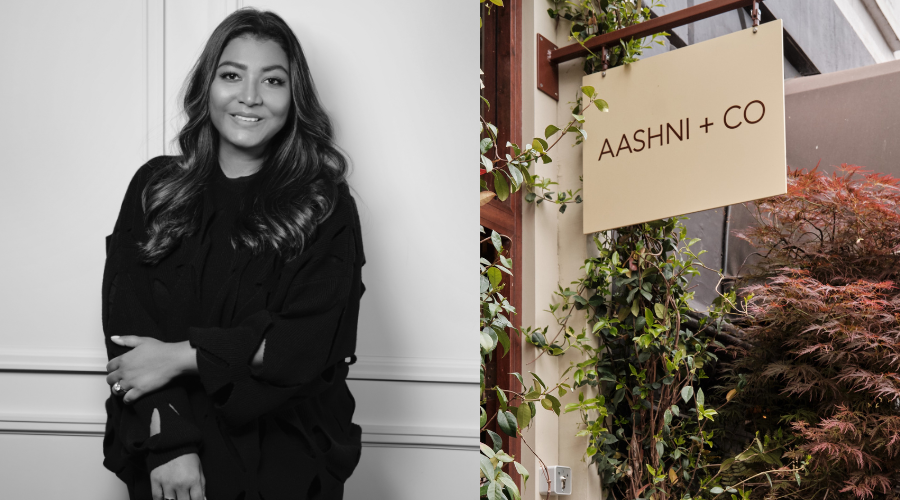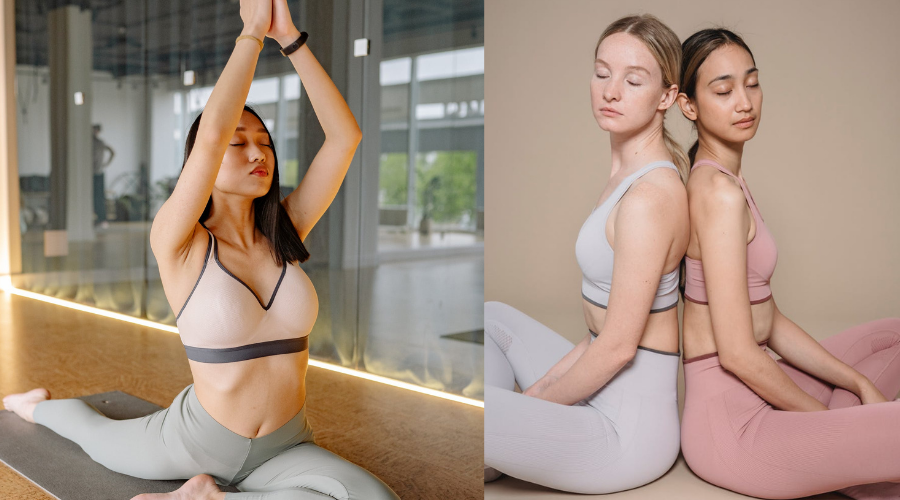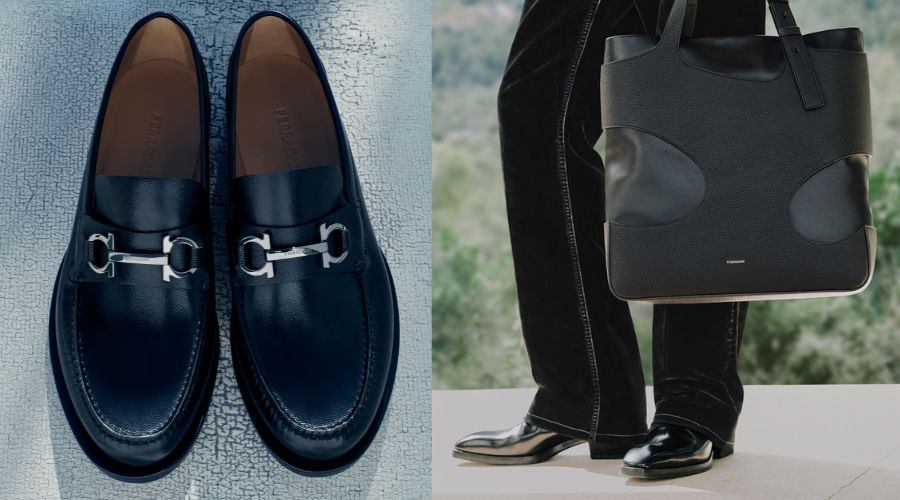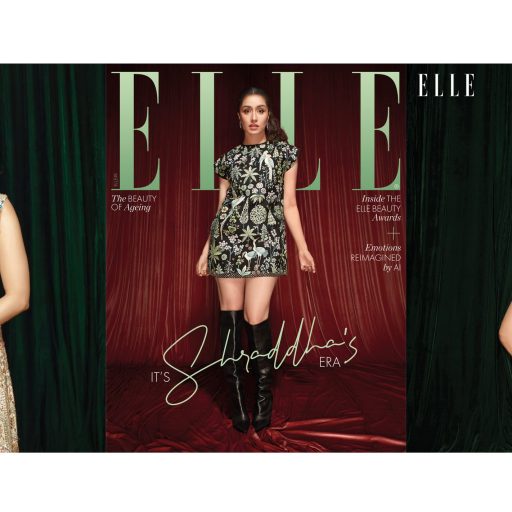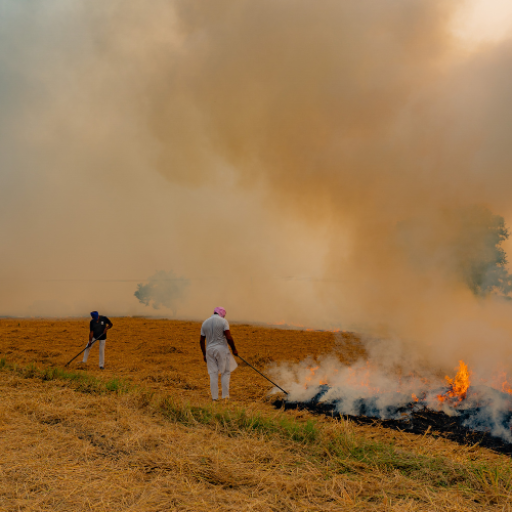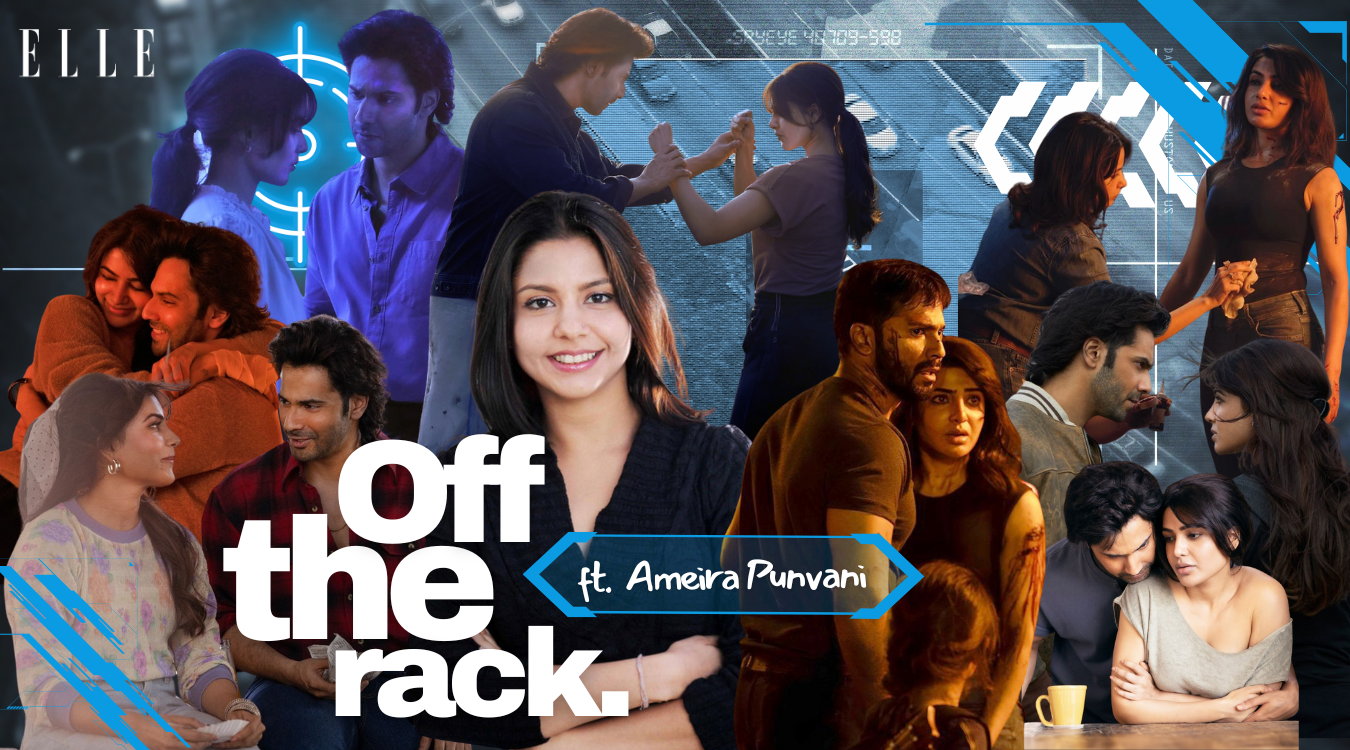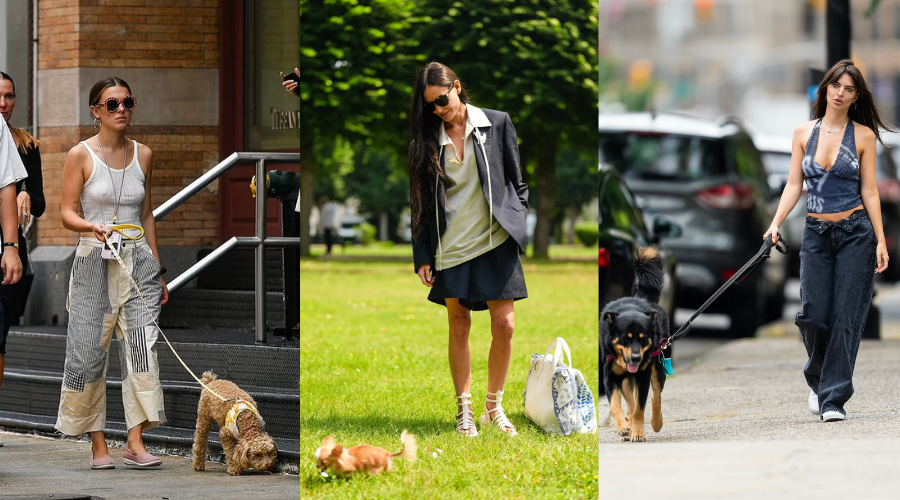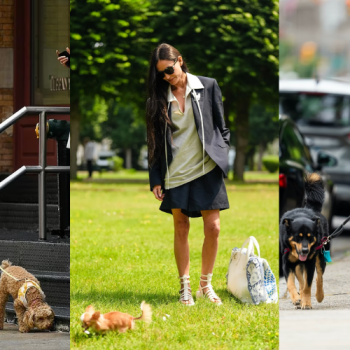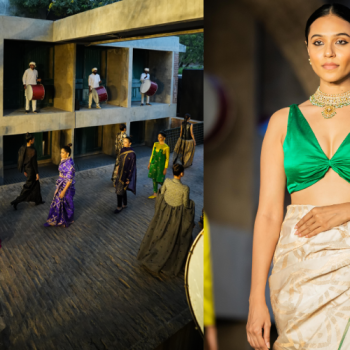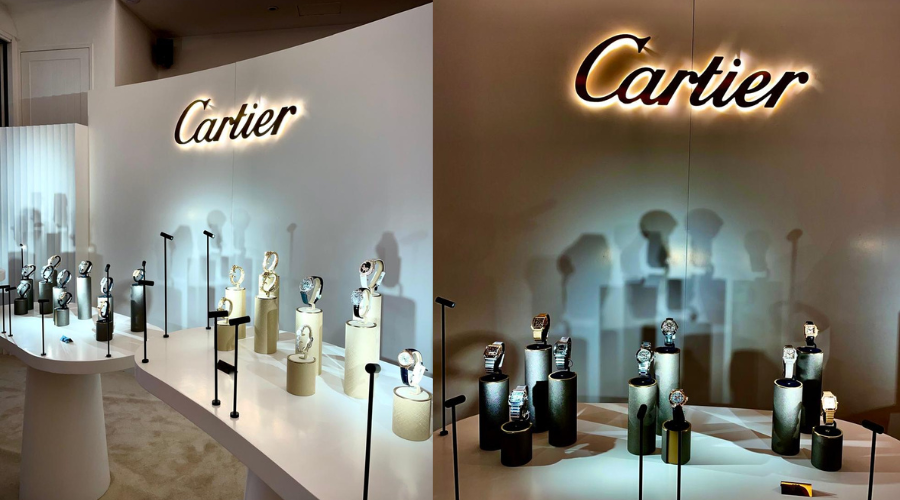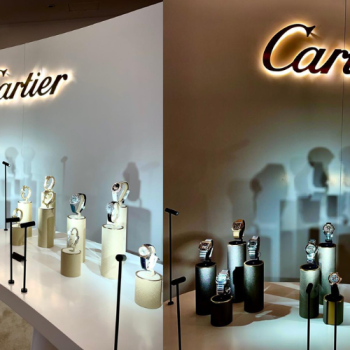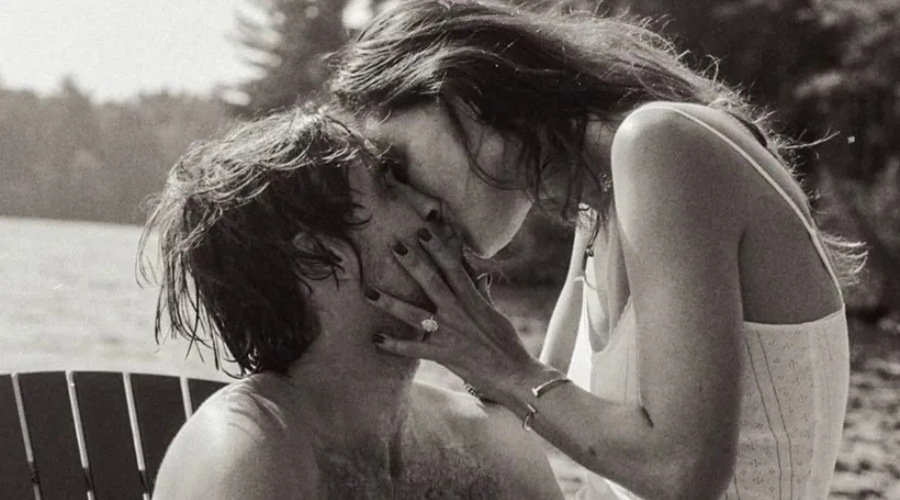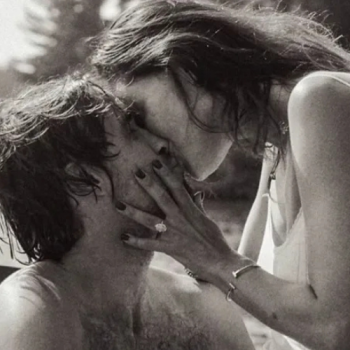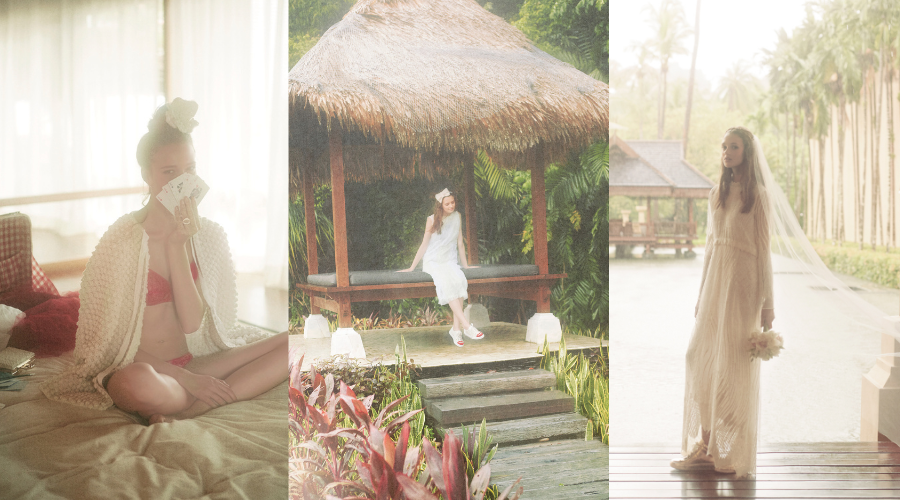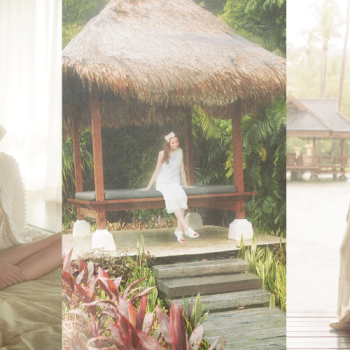On a bright and busy Monday, designer Riddhi Jain Satija led us into her world of colours, silhouettes, textures and shapes, as we stepped inside her Delhi- based apparel and home textile design space, Studio Medium, where she reinterprets traditional handwoven textiles with intensive resist-dyeing techniques. We couldn’t help but notice the immaculately draped blue sari with familiar pat- terns and weave, which she wore to complement her welcom- ing smile. We were told it’s from her JamBan collection in which Bengal’s traditional extra weft weave, ‘jamdani’ is synced with Gujrat’s indigenous tie-dye technique, ‘bandhani’.
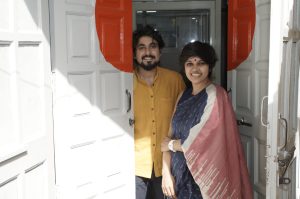
As she takes us through a day’s work at the studio, Riddhi explains, “We work on our textiles first, followed by the garment construction. It’s not a linear process; we rely on back work that makes our studio textile-driven.” The finalised colour palette is handed over to the artisans who start prepping for the tie-dye process. Meanwhile, she gets on discussing the next collection with her team of designers through sample sketches, garment construction patterns, shade cards, and more.
OF THREADS AND COLOURS
“There is a lot of back and forth in our dyeing processes. We work towards a more planned way of dyeing in shibori to achieve a level of perfection and showcase that tie-dye patterns can be well-engineered.” Meanwhile, her artisans get busy with the fabric tying process in shibori as per the design mandate.
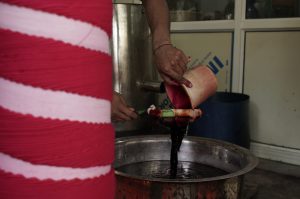
For ‘Tie’: Arashi shibori, colloquially referred to as the pole- wrapping technique, was demonstrated by the artisans when they diagonally wrapped in ivory fabric around the PVC poles and se- cured it tightly with thread along the length. Next, the cloth was scrunched to create alternate sections of eight folds each, imitating an ‘accordion’ or ‘fanfold’. Arashi is the Japanese word for ‘storm’ and the diagonal patterns created through this technique give an impression of rain falling diagonally in direction of the storm.
For ‘Dye’: The neatly wrapped pole was first dipped in a hot water bath over a stove. Next, the natural and azo-free pink dye was added to create a dye bath and the artisan carefully dipped the fabric-wrapped pole using a water mug. Salt was added to enhance the colour and the shade was checked at regular intervals. Upon reaching the desired shade of pink, the pole was taken out of the bath and left out in the sun for 15-20 minutes to drain out the excess dye. Riddhi joined her artisan to untie the thread and displayed the vibrant pattern that imitated veins on a leaf.
For ‘Dry’: Dyed fabric is moved to a drying machine for a spin and then hung outside in the sun to let it dry completely.
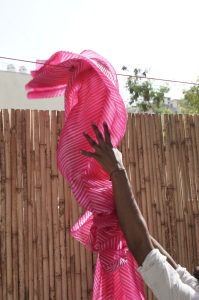
PRECISION AND DETAILS
The tailors start working on garment construction with the dried fabric. The apparel is then handed to the artisans who hand-em- broider or stitch to finish the piece. Every stage of design and production is high on craftsmanship and detail, with a dedicated focus on sustainability. Once ready, the garment is checked for quality, ironed and displayed on the rack.

CORE UPCYCLING ETHICS
Riddhi informes us, “We have been extremely conscious of our waste since the beginning. It leads us to work on zero-waste pat- terns wherever possible and upcycle innovatively in other cases.” She took us around to show how by-products like threads obtained from the bandhani technique and fabric scraps from the previous collections or garment construction processes are turned into intriguing textile art. The bandhani thread clusters were laid down carefully on fabric by one of the artisans who explained the steps: once all the threads are arranged as per the design instruction, they will be sandwiched between another layer of fabric with Kantha stitch (both by hand and machine) to achieve the desired textile for outerwear. It falls under the ‘Re’ collection that draws inspiration from Monet’s impressionist paintings, in ideology as well as a visual representation.
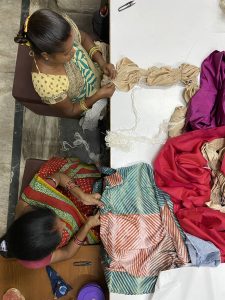
The other artisan working with fabric scraps highlighted the ‘Bor(r)o(w)’ collection that is built on the Japanese ideologies of mending and namesake artform, Boro. The motif and patterns are freely formed by the artisan as she arranges the scraps down on the fabric. The idea is to patch, stitch and piece together borrowed bits from previous collections or wastes and preserve their beauty in a new textile for the collection.
“We employ various dyeing techniques on hand-woven textiles to create our classic silhouettes, including flowy kaftans, free- sized capes, shirts, saris, jackets, to name a few. As a designer, it’s not always about creating new designs. It’s more about observing what’s happening around us and introducing simple innovations to it. We also need to understand that the weavers and dyers are comfortable in their respective art forms, you can’t disrupt that. The idea is to design mindfully and build an inclusive and sustainable community of practitioners to create unique narratives and experiences”, Riddhi concludes.
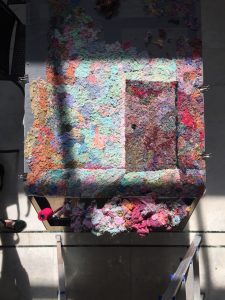
Growing up around textiles and bandhani technique in particular, at her mother’s workshop in Kolkata, Riddhi’s journey into the world of tie-dye is personal, “Dyeing was an integral part of my childhood—from Jaipuri bandhani to exploring the finer nuances of the technique from the Kutch district of Gujarat. I was introduced to the graphic elements of Japanese shibori and its different types while studying at the National Institute of Design in Ahmedabad. I am drawn towards the form of a ‘circle’ and keep exploring it through my designs as a personal quest to understand the complexities and beauty of the shape.”
Photographs: Studio Medium, Pankaj Dahalia

